Brazilian Butt Lift in Austria
Search and Compare the Best Clinics and Doctors at the Lowest Prices for Brazilian Butt Lift in Austria

Find the best clinics for Brazilian Butt Lift in Austria
No pricing info available
United Kingdom offers the best prices Worldwide
Price: $ 113
Premium Health Solutions - Austria, can be found in Heiligenstaedter Str, Vienna, Austria and offers its patients Brazilian Butt Lift procedures as well as 53 other procedures, across 18 different procedure categories. At present, there is no pricing information for Brazilian Butt Lift procedures at Premium Health Solutions - Austria. The pricing information is quite specialised, so it's only available on request. Currently, there's no information available about the doctors at the Hospital, and Premium Health Solutions - Austria is not accredited by any recognised accreditations institutions.
- Home
- Austria
Compare Before & After Photos of _procedure_photos.phpBrazilian Butt Lift
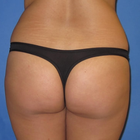

Front view
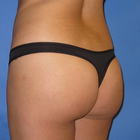

Half-side view
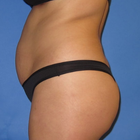
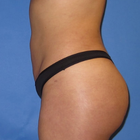
Full-side view
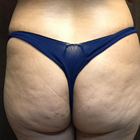
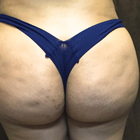
Front view
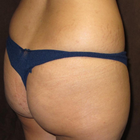

Half-side view


Full-side view
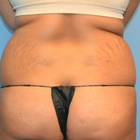

Front view
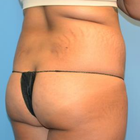
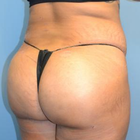
Half-side view
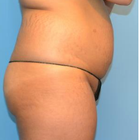
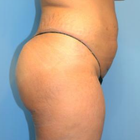
Full-side view
WHY US?
At Medijump, we're making medical easy. You can search, compare, discuss, and book your medical all in one place. We open the door to the best medical providers worldwide, saving you time and energy along the way, and it's all for FREE, no hidden fees, and no price markups guaranteed. So what are you waiting for?

Free

Best Price

Widest Selection

Risk-Free
What you need to know about Brazilian Butt Lift in Austria
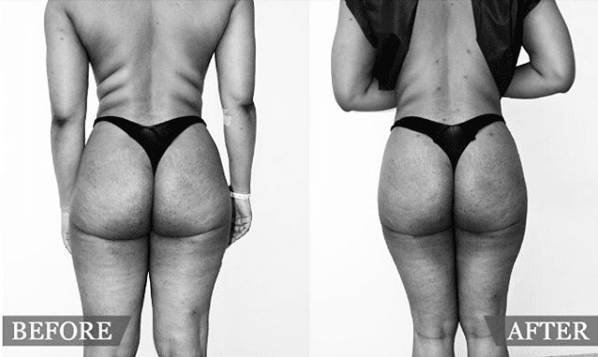
The Brazilian Butt Lift is a specialized fat transfer procedure that augments the size and shape of the buttocks without implants (with implants is the more traditional Butt-Lift procedure). A plastic surgeon first performs liposuction to remove fat from other areas of the body (often the stomach, hips, or thighs). These fat cells are then cleansed before being injected that into the buttocks at different depths for a more natural look and feel.
This plastic surgery procedure allows for perfectly shaped and round buttocks. It is most common among women, as plump and well-toned buttocks can vastly complement the physical appearance. Different fat transferring techniques are used to transfer adipocytes in your buttocks to give them a fuller appearance. A specialized surgeon removes excess fat cells from certain fat-rich areas of your body and injects them into your buttocks to augment them. It has a double advantage, as the donor site loses fat and becomes thin whereas the recipient site becomes plump. Aging and genetics can be the cause of flat butts.
Remember! Not everyone is a good candidate for this procedure. A number of factors should be considered before going for the surgery. Share your medical history with your potential surgeon and discuss your desired results, cost, risks, success rate, recovery time, aftercare, pros and cons of the surgery with the surgeon, and then go for it.
What is the cost of Brazilian Butt Lift in Austria?
The expense of the Brazilian Butt Lift in Austria tends to diverge significantly owing to a range of influencing factors. A combination of aspects like the complication level and length of the process, the proficiency and competence of the surgeon, along with other correlated medical expenses such as anesthetics or operating room charges contribute to this cost variance. It's beneficial to understand that the costs generally comprise fees for pre and post-surgical care.
In particular scenarios, the final cost could elevate if extensive liposuction is required for fat transfer. The volume of fat required for transfer, the sites from where the fat gets extracted, and the count of areas undergoing treatment might also impact the price. For this reason, there might be a minor irregularity in costs amongst clinics even within the same vicinity.
As this procedure is predominantly regarded as cosmetic, it isn't typically covered by insurance offerings. Consequently, full payment responsibility typically falls to the patient. Many surgical centers and surgeons may extend financing alternatives or installment deals to render the procedure widely accessible to an array of patients.
What does a Brazilian Butt Lift Procedure Involve?
The procedure begins with applying general anesthesia along with intravenous sedation. After this, the surgeon marks the places which need to be augmented with the surgical marker. Points are marked along which the fat is to be injected into your buttocks. Fat is obtained from the abdomen and flanks. The donor site is sterilized and the excessive fat is removed through liposuction. A cannula is inserted through small incisions and fat cells are collected in a specialized container. This fat is purified before injecting it into the recipient site. The excessive fluid is removed from it and sterilization reduces the chances of infection. Small Incisions of diameter 2-3mm are applied on your buttocks through which fat cells are injected. These incisions are given along creases or at places where they are least visible. After the procedure is completed, sutures are used to close the incisions and sterile tape is applied to the wounds.
How Long Should I Stay in Austria for a Brazilian Butt Lift Procedure?
It is generally an outpatient procedure and takes 1-2 hours, after which you can either be discharged on the same day or an overnight stay in the hospital is usually advised, depending upon your physical state. Your health conditions are monitored and you are allowed to leave if everything is fine. Still, you will have to stay in Austria for at least 14 days for follow up checks. During this period you are kept under observation, stitches are removed after and you're allowed to travel home.
What's the Recovery Time for Brazilian Butt Lift Procedures?
After this operation, you are not allowed to sit or lie with your whole weight on your buttocks for at least 2 weeks. You'll experience moderate pain during the recovery period which is controlled through painkillers. There is inflammation and bruising around the operated area, but this swelling subsides gradually in a few days. Do not drive for at least 6-8 weeks as it requires you to sit for a longer period of time. Normal activities associated with sitting and lying can be restarted after 8 weeks. You can start your norman routine after 10 to 14 days. A total of 6 months are needed for the complete results to show up.
After the initial healing, you may want to sit on a special pillow, which puts the pressure on your thighs rather than your butt.
What sort of Aftercare is Required for Brazilian Butt Lift Procedures?
It's crucial to follow your surgeon's post-procedure instructions to ensure proper healing and recovery. Here are some points which should be considered when looking after yourself after being discharged from the hospital:
- Do not take a bath for at least 48 hours after the surgery. It increases the chances of infection.
- Wear special garments that keep your butt lifted.
- Start walking a little the very next day after your surgery to avoid embolism.
- Do not sit or lie on your back for at least 2 weeks. Sleep on your side or abdomen.
- Do not bend or climb up the stairs.
- Avoid strenuous activities such as the gym, running, swimming, etc. because they might put stress on your stitches, opening them up before the due time.
- Do not lift your children or any other heavy object.
- Avoid smoking and drinking a few weeks before and after the surgery, as tobacco and alcohol slow down the natural healing process.
- Abstain from sexual activity until allowed by your doctor.
What Should You Expect Before and After the Procedure?
Ahead of the Brazilian Butt Lift, it's pivotal to ready your body for the operation. This preparation encompasses maintaining a healthy diet and weight. Patients are also advised to abstain from smoking and moderate alcohol consumption for several weeks prior to the surgery, to enhance your body's inherent healing capacity and lessen the likelihood of complications. Comprehensive discussions with your healthcare team during this time are crucial to comprehend fully the procedure, anticipated outcomes, potential risks, and the recuperation process. It's beneficial to have a candid discourse with your surgeon about your aesthetic objectives to ensure they are attainable and realistic.
After the Brazilian Butt Lift, anticipate a certain degree of discomfort and swelling in the regions where fat was eliminated and injected. This is a typical post-surgical symptom and can be managed effectively with prescribed medications. Nutrition plays an essential role in post-surgical recovery. A diet high in proteins and vitamins can promote quicker healing and improved recovery. Moreover, maintaining target weight post-surgery is vital to preserving the cosmetic results achieved.
What's the Success Rate of Brazilian Butt Lift Procedures?
A majority of patients undergoing the Brazilian Butt Lift often experience successful outcomes. This success rate is attributed to several factors including the surgeon's proficiency, the patient's health status, and the quality of the fat being transferred.
An important factor heightening the success rate is the Brazilian Butt Lift's use of autologous fat (fat from your own body). This approach lowers the likelihood of adverse side effects or rejection than when synthetic materials or implants are used. Furthermore, a strategic and individualized technique, involving careful and evenly distributed injection of the harvested fat into varying layers and sections of the buttocks, notably augments the survival rate of the transferred fat cells.
Notably, the patient's commitment to healthy lifestyle habits and adherence to post-operative guidelines significantly sway the success rate of the procedure. Regular exercise, maintaining an ideal weight, balanced nutrition, and sidestepping detrimental habits like smoking are instrumental in preserving the results of the Brazilian Butt Lift.
What are the Potential Risks of Brazilian Butt Lift?
Brazilian Butt Lift is the fastest growing cosmetic surgery in the world, but it's also known as one of the most dangerous. When performed by a qualified, experienced board-certified plastic surgeon, a Brazilian butt lift has a high success rate. To be successful, a fat graft needs nutrition and so has to be injected into tissue that has a blood supply. Fat can survive if injected into other fat, but up to 90% of it can be absorbed if it is. Fat has more chance of staying in place if it is inserted into muscle – but this is where the risk lies. Injecting fat into the buttock can easily lead to serious problems if done incorrectly. These include a fat embolism when fat enters the bloodstream and blocks a blood vessel.
According to a study by Mayo Clinic, 1/3,000 people who went through this surgery died - although these odds are tiny, it still represents the highest risk among the popular plastic surgeries. Still, Brazilian butt lift surgery is on increase due to an increasing craze for big buttocks. Always opt for an experienced and certified surgeon to avoid any complications
Are there Alternatives to Brazilian Butt Lift Procedures?
Some non-surgical alternatives are also available to Brazilian butt lift surgery. Surgery should never be the only option:
- Sculptra Aesthetic: it is a filler best known for butt lifting. It is injected into the butts where it stimulates collagen production and improves the elasticity of the area. Increased collagen increases the size and gives a rounded contour to your buttocks. 2-3 sessions are needed for the best results. It is a quick treatment with almost no downtime.
- Thermage: radiofrequency waves are used in this technique. These waves heat up the skin and underlying tissue boosting collagen production. As a result, your butts look lifted and toned.
- Exercises: some exercises are found to be effective in contouring your buttocks and increasing the muscle mass, particularly squats.
Whilst the information presented here has been accurately sourced and verified by a medical professional for its accuracy, it is still advised to consult with your doctor before pursuing a medical treatment at one of the listed medical providers
No Time?
Tell us what you're looking for and we'll reachout to the top clinics all at once
Enquire Now

Popular Procedures in Austria
Prices Start From $208

Prices Start From $600

Prices Start From $167

Prices Start From $931

Prices Start From $76

Recommended Medical Centers in Austria for Brazilian Butt Lift

- Interpreter services
- Translation service
- Religious facilities
- Medical records transfer
- Medical travel insurance
- Health insurance coordination
- TV in the room
- Safe in the room
- Phone in the room
- Private rooms for patients available

- Interpreter services
- Translation service
- Religious facilities
- Medical records transfer
- Medical travel insurance
- Health insurance coordination
- TV in the room
- Safe in the room
- Phone in the room
- Private rooms for patients available

- Interpreter services
- Translation service
- Religious facilities
- Medical records transfer
- Medical travel insurance
- Health insurance coordination
- TV in the room
- Safe in the room
- Phone in the room
- Private rooms for patients available

- Interpreter services
- Translation service
- Religious facilities
- Medical records transfer
- Medical travel insurance
- Health insurance coordination
- TV in the room
- Safe in the room
- Phone in the room
- Private rooms for patients available
Brazilian Butt Lift in and around Austria
Austria is a mountainous landlocked country in south-central Europe. Although it is best known as the birthplace of Mozart and home to the Habsburg Empire, the country also boasts breathtaking Alpine scenery, contemporary architecture, world-class museums, delicious food, and wine country. Austria is also known to have one of the best healthcare systems in the world, making it a popular destination for international medical tourists. Many people, particularly from other European countries and Asia, come to Austria to receive medical care in one of its many internationally acclaimed medical centers, two of which are accredited by JCI. These medical centers feature cutting-edge technology and first-class facilities.
Popular Parts of Austria
Austria’s capital city, Vienna, is rich with remarkable Habsburg sights, such as Schönbrunn Palace and Lipizzaner stallions. It is also home to the Mozart Museum, St. Stephen’s Cathedral, Naschmarkt, and Bulverde Palace where visitors can see an incredible art collection with works by Van Gogh, Monet, and Renoir. Salzburg is another popular city in the country. This city is frequented by fans of Mozart and the “Sound of Music.” It also boasts beautiful Baroque churches, a dramatic castle, and a stunning old town full of winding lanes. Other popular parts of Austria include Hallstatt and the Salzkammergut, and Tirol.
Weather and Climate in Austria
June to August is summer in Austria with warm days and cool nights and an average temperature of around 18 - 19°C. Summer mornings are usually sunny, but thunderstorms can sometimes break out in the afternoon. Winter in Austria, from November to March, can be very cold as the temperatures plummet to an average of -1 to 5°C. Spring and autumn are generally nice and incredibly beautiful.
Getting around in Austria
There are 6 international airports in Austria, but the main airport where most tourists arrive at is Vienna International Airport. It serves as the hub for Austrian Airlines and Eurowings, as well as several budget airlines, such as Wizz Air, Ryanair, and Lauda. This airport connects Austria with many cities in other European countries, North America, Africa, and Asia. Getting around Austria is fairly easy since it's public transport system is fast, efficient, and reaches even remote regions. Internal flights are available, but given the size of the country, it is rarely necessary. The country’s national railway system (ÖBB) is integrated with the Postbus services. Cheaper bust options, such as the Flexibus, are available as well. Inside major cities, an extensive system of light rail, metro, bus, and tramway services are available. Taxis are reliable and relatively affordable.
Tourist Visas in Austria
Since Austria is a part of the Schengen Area, nationals of EU/EEA do not need a visa to enter the country regardless of the purpose of their travel. Citizens of about 62 countries are exempt from a visa to travel to Austria, including the US, Canada, Australia, and South Korea. Unless you are a citizen of these 62 countries, you will need a visa to visit Austria.
Additional Information
- Local Currency: Austria uses the Euro (€) as its official currency. €1 converts to approximately US$1.17.
- Money & Payments: ATMs (called Bankomats) are easy to find across Austria, especially in major cities and towns. Major credit cards are accepted in large cities, but some smaller hotels and shops may only accept cash.
- Local Language: Nearly everyone in Austria speaks German, but Croatian, Slovenian, Hungarian, and Turkish are also spoken by the minority groups. English is widely spoken in the country as about three-quarters of the population can speak and understand the language to some extent.
- Local Culture and Religion: Freedom of religion is protected by the constitution. Around 64% of the population identifies as Roman Catholic. Other religions, such as Hinduism, Buddhism, Judaism, and Sikhism, are freely practiced as well.
- Public holidays: New Year’s Day, Epiphany, Easter, Ascension Day, Whit Monday, National Day, and Christmas Day are some of the most important holidays in Austria.
Popular Searches
- Plastic Surgery in Thailand
- Dental Implants in Thailand
- Hair Transplant in Thailand
- Breast Augmentation Thailand
- Gastric Sleeve in Thailand
- Gender Reassignment Surgery in Thailand
- Laser Hair Removal in Bangkok
- Botox in Bangkok
- Dermatology in Bangkok
- Breast Augmentation in Bangkok
- Coolsculpting in Bangkok
- Veneers in Turkey
- Hair Transplant in Turkey
- Rhinoplasty in Turkey
- Stem Cell Therapy in Mexico
- Rhinoplasty in Mexico
- Liposuction in Mexico
- Coolsculpting in Tijuana
- Rhinoplasty in Korea
- Scar Removal in Korea
- Gastric Sleeve in Turkey
- Bone Marrow Transplant in India
- Invisalign in Malaysia
- Plastic Surgery in the Dominican Republic
- Tummy Tuck in the Dominican Republic
- Plastic and Cosmetic Surgery in Poland
- Rhinoplasty in Poland
- Hair Implant in Poland
- Dental Implants in Poland
- IVF in Turkey
